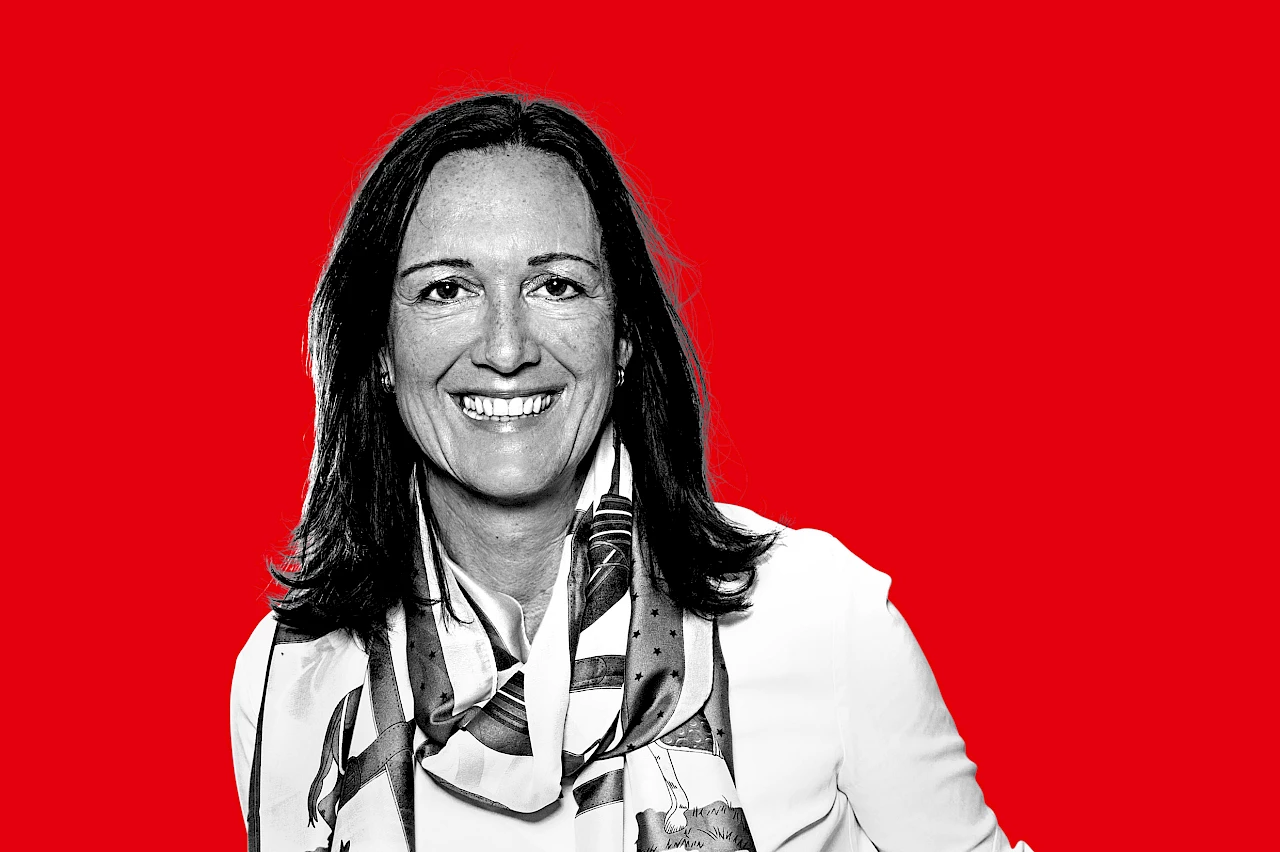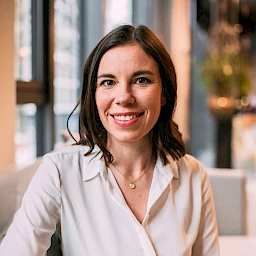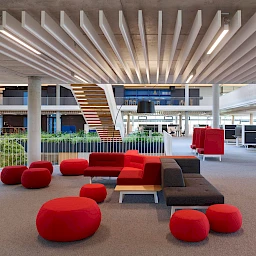The big day finally came in the summer of 2023, when the Ravensburger game and toy company moved into its new multi-space office with a floor area of 4,500 square meters. During a construction period of more than 18 months, a new work environment had been created for up to 180 employees. The goal was not simply to offer workstations but to create a vibrant environment where creativity thrives, ideas bubble up and teamwork is encouraged. The IBA Forum editorial team talked with Simone Peckhaus, Group Director Human Resources at Ravensburger, about the newly created worlds of work.
What’s the special aspect of the new Ravensburger office?
The new office is an expression of our corporate values and our commitment to long-term investment in innovation and sustainability. It’s important to have a renewal that preserves tradition, in which you remain aware of your roots but nonetheless dare to do something new. Ravensburger has always considered it important to connect people through games and education, promote their creativity and create shared memories. Now we’ve also put that into practice for our employees in our new area. In our multi-space, which we planned and designed together with Vitra, we expanded this corporate goal on a physical level for our teams. Here they have the opportunity not only to work on projects but also to learn from one another through transparency, as well as to make and strengthen personal connections.
What did the place look like before the conversion?
The building in which the multi-space is located was constructed in the 1970s and was a production building, as it still is today. The commercial offices were on the first floor, and so was the company’s restaurant until 2015. The offices themselves were typical group offices from the 1970s, in different sizes and a strongly industrial design. Because of the extremely high ceilings, the acoustics were problematic. The decision to launch the project had already been made before the Covid pandemic. To gain inspiration, the management team visited the Vitra Design Museum in Weil am Rhein and Disney in Munich, among other places. From the very start, we thought it would be important for the new design to reflect our corporate culture and enable people to experience it directly.
What was your vision of the new worlds of work at Ravensburger?
Our vision for our multi-space was to create a harmonious connection between modern design, an inspiring atmosphere and functional practicability. Here, teams can find not only well-equipped work areas and conference rooms but also comfortable seating areas, project rooms, a workshop, a gym and generously proportioned social rooms as well as a Working Café. The open-plan room design is meant to stimulate interdisciplinary conversations and embolden people to explore new pathways again and again. It’s a network of opportunities, in which every individual and every team finds the space it needs to complete its current tasks as well as possible. For us it was very important to make sure the concept also includes visual elements that are typical of Ravensburger. One example of how we did that is the big box-type windows in our corporate colours.
How does “activity-based working” actually function at Ravensburger?
At our company, work and the work environment are structured and designed in a way that enables every individual to work in the place where his or her tasks are supported most effectively. We provide our teams with changing work environments, depending on their task at hand. We’ve moved away from the traditional workplace and toward communal areas, quiet areas, project rooms, a Working Café and “mutes”, which ensure confidentiality. Our creative spaces, workbenches, library and workshop also serve as work areas. This kind of working is a process of change that requires our employees to do some rethinking. We are moving in a good direction, and we’re providing support by means of regular feedback rounds with the colleagues who work there.
How did the employees react to the concept?
We chose an unusual procedure and integrated the employees into the planning process — not simply after we had decided that we wanted to build a multi-space, but long before that. In other words, the employees themselves considered how they wanted to work in the future – in group offices, an open-plan design, a combined office or a multi-space. A majority of the employees then expressed their support for a multi-space, which was also the favourite option of the management. Nonetheless, various people had reservations as to whether this would be a good work environment for them. All of the feedback and individual needs were also discussed in close cooperation with the works council and taken into account in the concept. That led to a high degree of acceptance of the new work environments. We talked with each one of the 130 employees personally and asked them whether they would like to move into the new rooms. Only one of the 130 employees said he didn’t want to move into the new office because of health reasons. A workstation in a different building was arranged for him.
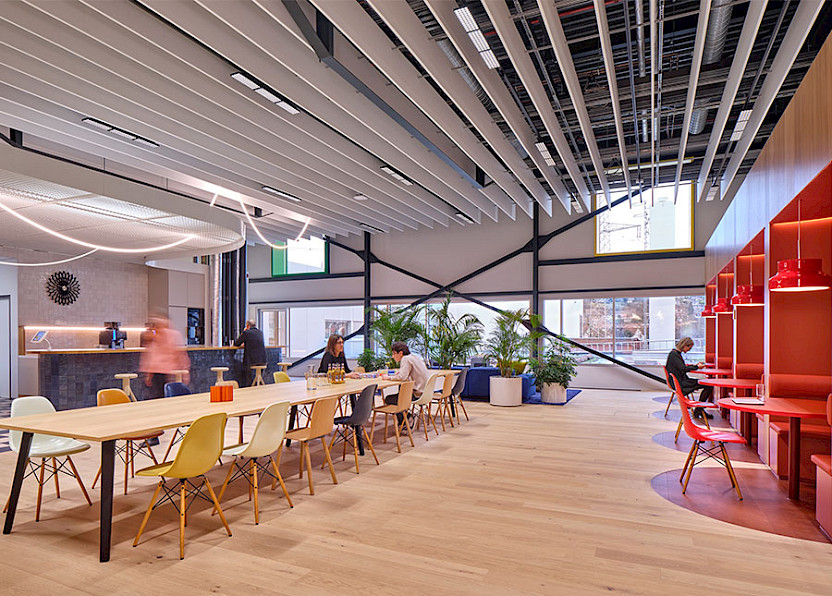
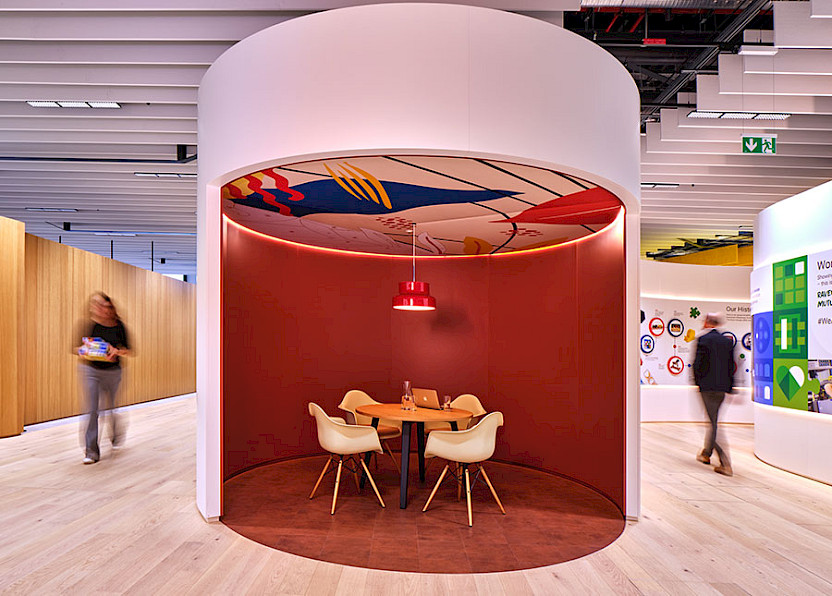


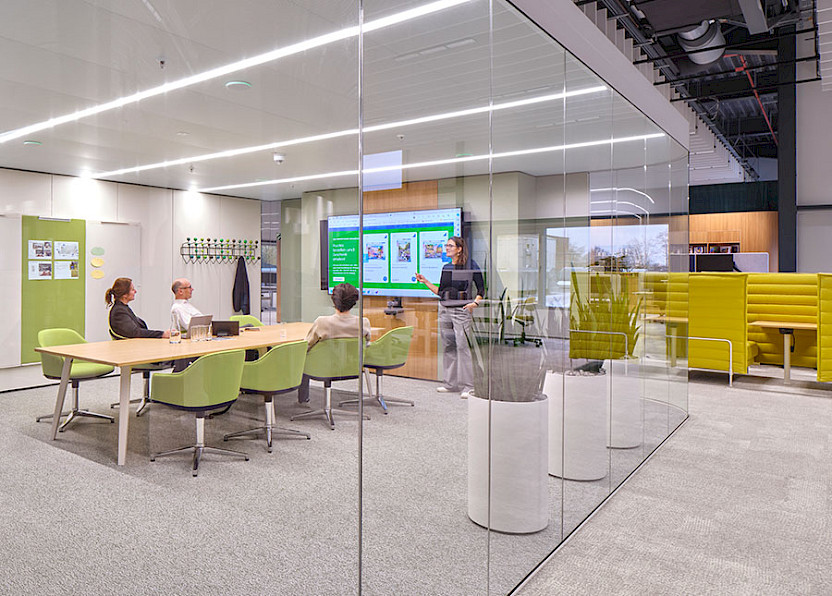

Innovation is very important in your sector. How do you support innovation at your premises?
We deliberately made sure that our new work environment was designed in a way that made the various product categories (for example puzzles, painting by numbers, GraviTrax etc.) transparent during their product development process. They basically operate openly — in other words, others can observe the process. The Innovation department, which operates across product categories, is also located between the product categories. In addition, all of the product categories share a common workshop. When we assign locations to the individual teams, it’s important to create adjacencies that make sense. That way the communication between the departments works much better and promotes innovation, transparency and flexibility.
But the challenge lies in getting people to relinquish their fixed workstations and accept and internalise new ways of working. This process of change is still going on, even though many people accepted the new opportunities in a positive spirit from the very start. Through workshops conducted before the conversion and a high degree of employee participation, we were able to achieve acceptance early on. We are proud of the fact that the Ravensburger employees are utilising the advantages of the new work environment so actively.
Ms Peckhaus, thank you for talking with us.
Ravensburger AG is an internationally operating corporate group with headquarters in Ravensburg. It is well-known all over the world primarily because of its production of board games and puzzles. Ever since it was founded in 1883, Ravensburger has been a family-owned company characterized by a sense of tradition and well-established values. Further information is available at: https://www.ravensburger-gruppe.de/en/.
Cover photo: Ravensburger
Photos: Vitra



